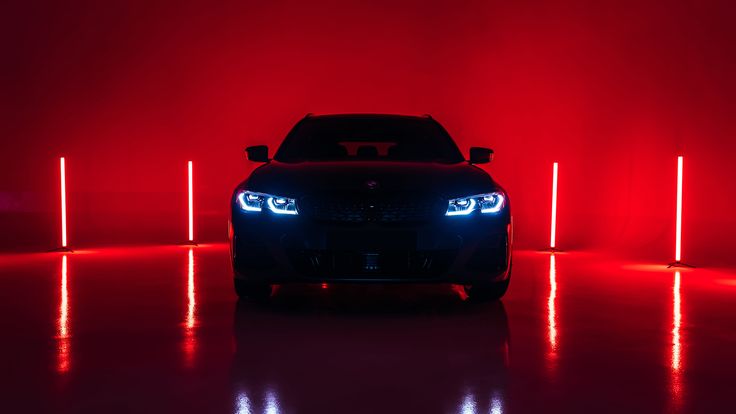BMW Carbon Fiber Parts: Carbon fiber upgrades are some of the most popular modifications among BMW enthusiasts. They instantly transform the look of your ride, cut down weight, and add that aggressive motorsport feel that’s impossible to fake. But while BMW Carbon Fiber Parts can deliver stunning results, many buyers make costly mistakes that turn excitement into frustration.
Whether you’re upgrading a daily driver or fine-tuning your BMW E36 3 Series for shows or track use, knowing what not to do when buying carbon fiber parts will save you time, money, and headaches. Let’s break down the most common pitfalls — and how to avoid them.
1. Ignoring Compatibility and Fitment Details
The first — and most common — mistake is assuming that all BMW Carbon Fiber Parts are universal. They’re not. Every BMW model has unique body lines, mounting points, and design dimensions. Even between trims of the same series, parts can vary slightly.
For example, BMW E36 3 Series Carbon Fiber Parts won’t fit an E46 or F30 without major adjustments. A carbon fiber front lip for a 1997 M3 Coupe won’t necessarily match a 1997 328i Sedan. That’s why checking model year, body style, and part-specific fitment before purchase is crucial.
What to check before you buy:
- Model and production year (E36, E46, F30, G20, etc.)
- Body type (sedan, coupe, convertible, touring)
- OEM vs. aftermarket design differences
- Mounting compatibility (OEM brackets vs. aftermarket installs)
Always double-check with the seller or manufacturer that the part is made specifically for your BMW model. If you’re unsure, ask for photos of the installed part on the same model — that’s the best real-world confirmation you can get.
2. Buying Based on Price Alone: BMW Carbon Fiber Parts
We get it — carbon fiber isn’t cheap. But chasing the lowest price is one of the biggest traps in this market. There’s a massive difference between true carbon fiber parts and carbon fiber-look parts made from plastic or fiberglass wrapped in a carbon-style film.
While the cheaper options may look convincing at first glance, they won’t offer the same strength, weight reduction, or UV resistance as genuine carbon fiber. Over time, they can fade, crack, or even delaminate under heat and pressure.
What defines genuine carbon fiber quality?

- Material construction: True carbon fiber weave, not hydro-dipped or laminated.
- Finish quality: Even weave pattern, smooth, clear coat, no bubbling or cloudiness.
- Weight: Genuine parts are significantly lighter than fiberglass.
- Durability: Resistant to temperature changes, UV rays, and minor impacts.
Remember — when it comes to BMW Carbon Fiber Parts, you’re paying for precision, durability, and performance. Spending a little more upfront usually means better longevity, fit, and satisfaction in the long run.
3. Overlooking the Finish and UV Protection
Another common mistake is ignoring the finish type. Carbon fiber can come in glossy, matte, or satin finishes, and each needs different levels of protection and maintenance.
More importantly, not all clear coats are created equal. Poorly finished carbon fiber can yellow, haze, or peel when exposed to sunlight and heat. This happens because of insufficient UV protection in the resin or clear coat.
What to look for:
- UV-resistant clear coat: Prevents fading and discoloration.
- Even surface texture: No bubbles or uneven gloss.
- Warranty or coating certification: Reliable manufacturers stand by their finish.
If your BMW spends a lot of time outdoors, investing in UV-protected or ceramic-coated Carbon Fiber Car Accessories is worth every dollar. You’ll maintain that deep, mirror-like shine and prevent premature fading.
4. Ignoring Installation Complexity
You’d be surprised how many people order BMW Carbon Fiber Parts thinking they’ll “just bolt on” — only to find themselves with misaligned panels, gaps, or mounting issues. Some parts, like mirror caps or interior trims, are relatively easy to install. Others, like front lips, rear diffusers, or hoods, may require professional fitting, drilling, or even bumper removal.
Before you order:
- Review the installation guide or video if available.
- Check whether modifications or adhesive tapes are required.
- Understand the difference between OEM-style and custom-fit designs.
- Budget for professional installation if you’re not confident doing it yourself.
If you’re upgrading an older model like the BMW E36 3 Series, keep in mind that age, paint wear, and previous repairs can affect how new parts align. Professional installers can fine-tune the fit and avoid damaging either the new part or your factory panels.
5. Forgetting About Weight Balance and Aerodynamics
One of the biggest perks of carbon fiber is weight reduction — but when done incorrectly, it can mess with your car’s balance. Replacing a stock steel or aluminum hood with a lightweight carbon version changes your BMW’s weight distribution.
If you’re running your car on the track, even small shifts in weight or aerodynamics can affect handling. Installing a carbon fiber spoiler or splitter without considering the downforce balance can lead to understeer or oversteer at high speeds.
Smart upgrade tips:
- Balance front and rear aero components (e.g., front lip with rear diffuser).
- Don’t mix heavy OEM parts with ultra-light carbon replacements without adjusting suspension or setup.
- For track use, consider CFD-tested parts from reputable brands.
6. Ignoring Brand Reputation and Reviews
The market for BMW Carbon Fiber Parts has exploded, which means not every seller is trustworthy. Some shops import low-quality replicas and sell them under premium-sounding labels.
Before you buy, always check:
- Customer reviews with photos of installed parts.
- Brand reputation in BMW owner forums or enthusiast groups.
- Warranty coverage and return policy.
- Whether the company provides detailed fitment information.
Reputable sellers are transparent about their materials, production process, and compatibility.
7. Skipping Aftercare and Maintenance: BMW Carbon Fiber Parts
Even the highest-quality Carbon Fiber Car Accessories need proper care to stay in top condition. Neglecting cleaning or protection routines can dull the finish and reduce lifespan.
Basic maintenance checklist:
- Use a pH-neutral car shampoo to clean surfaces.
- Avoid harsh chemicals or abrasives that can damage the clear coat.
- Apply ceramic coating or wax designed for carbon fiber every few months.
- Wipe down with microfiber cloths — never rough towels or sponges.
- Park in the shade or use a car cover when possible.
8. Mixing Weave Patterns or Finish Styles
This one’s more about aesthetics than performance, but it’s still important. Mixing different carbon fiber weave patterns (like 2×2 twill with forged carbon) or finish types (matte with glossy) can make your BMW look mismatched rather than cohesive.
If you’re building a clean, unified look, stick to one weave type and finish across all visible components — hood, mirror caps, spoiler, and interior trims. This visual consistency makes your upgrades look factory-integrated rather than pieced together.
9. Overdoing It with Carbon Fiber
Carbon fiber is addictive — once you start, it’s hard to stop. But going overboard can throw off your car’s visual balance and make it look more “flashy” than “refined.” The best builds use restraint: tasteful placement, functional design, and consistent styling.
A few strategically chosen BMW Carbon Fiber Parts — like a front lip, trunk spoiler, and mirror caps — often look far better than covering every inch of the car in carbon. Think performance-inspired, not over-styled.
Final Thoughts: BMW Carbon Fiber Parts
Buying BMW Carbon Fiber Parts isn’t just about upgrading your car — it’s about investing in quality, performance, and craftsmanship. Whether it’s a BMW E36 3 Series Carbon Fiber Part or modern Carbon Fiber Car Accessories, the goal should always be precision and purpose.
Avoiding the common mistakes above will help you get the most out of your investment — cleaner installs, better fitment, and a look that turns heads for all the right reasons.
Choose quality. Verify fitment. Respect the material. That’s how you make carbon fiber truly elevate your BMW — not just change its appearance, but enhance its character.



